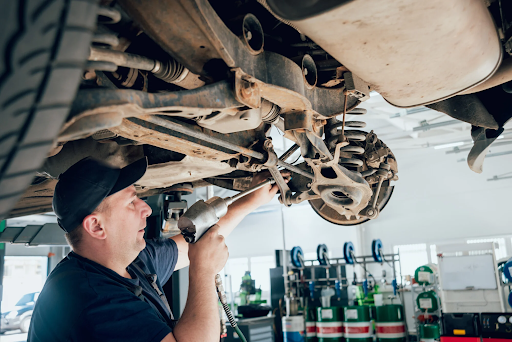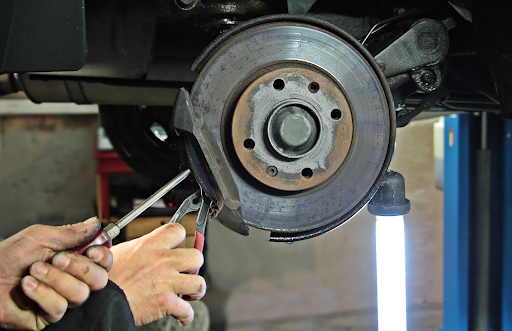
Auto lifts are an essential tool for many automotive professionals and enthusiasts. Whether you're running a busy garage or working on your car at home, maintaining your auto lift in top condition is crucial for safety and efficiency. This guide will provide you with all the tips and knowledge you need to keep your auto lift running smoothly for years to come.
Discover how to understand your auto lift, follow best maintenance practices, troubleshoot common issues, and know when to seek professional assistance. Let's get started!
Understanding Your Auto Lift
Types of Auto Lifts and Their Specific Uses
Auto lifts come in various types, each designed for specific tasks. Understanding the differences helps you choose the right lift for your needs.
Two-Post Lifts:
These are ideal for garages with limited space. They are perfect for most cars and light trucks, offering easy access to the vehicle's underside.
Four-Post Lifts:
These provide more stability and are excellent for heavier vehicles. They double as storage solutions, allowing you to park one car above another.
Scissor Lifts:
Compact and versatile, scissor lifts are great for quick repairs and maintenance. They are easy to install and can be stored away when not in use.
Basic Components and Their Functions
Understanding the basic components of your auto lift is essential for effective maintenance. Here are the primary parts you'll encounter:
Hydraulic System:
This system powers the lift, allowing it to raise and lower vehicles smoothly. Regular inspection of hydraulic lines and cylinders is crucial.
Safety Locks:
These locks ensure that the lift remains stable when raised. Always check that they engage properly to prevent accidents.
Drive-On Ramps:
These ramps guide the vehicle onto the lift. Keep them clean and free of debris to avoid slippage.
Maintenance Best Practices
Regular Inspection Routines
To keep your auto lift in top condition, establish a routine inspection schedule. Regular checks can help you catch wear and tear early, preventing costly repairs down the line.
Daily Inspections:
Before each use, inspect for visible damage and ensure all safety features are operational.
Monthly Inspections:
Conduct a more thorough check, looking for leaks, worn components, and any signs of stress on the lift's structure.
Cleaning and Lubrication Guidelines
Proper cleaning and lubrication are key to the smooth operation of your auto lift. Follow these guidelines to keep everything running like new:
Cleaning:
Remove dirt and debris from all moving parts. Use a mild detergent and water to clean the lift, avoiding harsh chemicals that can damage components.
Lubrication:
Apply lubricant to all moving parts, including the hydraulic cylinder, safety locks, and drive-on ramps. Use the manufacturer-recommended lubricants for best results.
Safety Measures
Ensuring safety is paramount when working with auto lifts. Implement these measures to protect both the lift and personnel:
Training:
Ensure all users are trained in proper operation and safety procedures.
Protective Gear:
Always wear appropriate protective gear, such as gloves and safety glasses.
Emergency Procedures:
Familiarize yourself with the lift's emergency lowering procedures in case of power failure or other issues.
Troubleshooting and Repairs
Common Issues and Their Possible Causes
Even with regular maintenance, issues can arise. Here are some common problems and their potential causes:
Lift Won't Raise:
Check for hydraulic fluid levels. Low fluid can prevent the lift from operating correctly.
Unusual Noises:
Grinding or squeaking noises often indicate the need for lubrication or the presence of debris in moving parts.
Uneven Lifting:
This can be caused by misaligned ramps or a malfunctioning hydraulic cylinder.
Step-by-Step Guide for Minor Repairs and Adjustments
Some repairs and adjustments can be handled in-house. Follow these steps for common issues:
Hydraulic Fluid Refill:
Locate the hydraulic fluid reservoir, remove the cap, and fill to the recommended level. Be sure to use the correct type of fluid.
Lubricating Moving Parts:
Apply lubricant to all moving components. Wipe away any excess to prevent buildup.
Aligning Ramps:
Ensure that the drive-on ramps are parallel and properly aligned. Adjust as necessary to prevent uneven lifting.
When to Call for Professional Help
Knowing when to call a professional is crucial for maintaining your auto lift's integrity and safety. Seek professional assistance if you encounter:
Persistent Hydraulic Issues:
If the lift continues to have hydraulic problems after basic troubleshooting, it may require professional inspection and repair.
Structural Damage:
Any signs of structural damage, such as cracks or bent components, should be addressed by a certified technician.
Electrical Problems:
Electrical issues, such as faulty wiring or control panel malfunctions, require professional expertise to fix safely.
Also, keep in mind you can easily get professional help for this issue. Whether it's challenger lifts that need maintenance or a different brand, there are many experienced technicians available to assist you with any problem. And, you can find help online for any auto lift brand, making it easier than ever to keep your garage game at its best.

Regular maintenance is key to keeping your auto lift in top condition. By understanding your lift, following best practices, troubleshooting common issues, and knowing when to seek professional help, you can ensure your lift remains safe and efficient for years to come.
Remember, a well-maintained auto lift not only enhances your productivity but also ensures the safety of everyone in the garage. Don't wait until it's too late—start your maintenance routine today and keep your auto lift in peak performance!
Related Article:
8 Tools Every Professional in the Automotive Industry Should Have




(0) comments
Welcome to the discussion.
Log In
Keep it Clean. Please avoid obscene, vulgar, lewd, racist or sexually-oriented language.
PLEASE TURN OFF YOUR CAPS LOCK.
Don't Threaten. Threats of harming another person will not be tolerated.
Be Truthful. Don't knowingly lie about anyone or anything.
Be Nice. No racism, sexism or any sort of -ism that is degrading to another person.
Be Proactive. Use the 'Report' link on each comment to let us know of abusive posts.
Share with Us. We'd love to hear eyewitness accounts, the history behind an article.